Articles by Snehal Fernandes
Fiddling with car music system while driving as bad as talking on phone: Study
The study assumes significance, said researchers, as operating a music player while driving is not “perceived as risky” unlike a mobile phone conversation.

Updated on Jun 30, 2019 01:46 AM IST
Hindustan Times, Mumbai | Snehal Fernandes
Monsoon delight: Rain alert on phone every 15 mins
From next year, IITM-developed early warning system to help citizens avoid flooded localities; aid civic officials act swiftly in waterlogged areas.

Published on Jun 29, 2019 05:09 AM IST
Hindustan Times, Mumbai | Snehal Fernandes and Badri Chatterjee
TIFR scientists find increase in electric current in sun’s magnetic regions
Findings to help protect satellites based in earth’s outer environment

Updated on Jun 10, 2019 07:23 PM IST
Hindustan Times | Snehal Fernandes, Mumbai
Only 29% of south Mumbai fires get help in time: IIT-B study
Only 29% of south Mumbai fires get help in time: IIT-B study

Published on Jun 02, 2019 12:50 AM IST
Hindustan Times | Snehal Fernandes, Mumbai
How 16th-century Ahmednagar palace in Maharashtra stayed cool in summer
The natural cooling technique kept temperatures inside the building 8-12 degrees Celsius lower than the 46 to 48 degrees Celsius that the region experiences between March and June
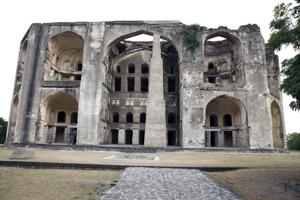
Updated on May 26, 2019 12:35 AM IST
Hindustan Times | Snehal Fernandes, Mumbai
Longevity protein, brain chemical combo may help treat Alzheimer’s, autism
A study by the Tata Institute of Fundamental Research will help pave the way for novel therapeutic strategies

Published on May 15, 2019 01:19 AM IST
Hindustan Times | Snehal Fernandes, Mumbai
What made our universe what it is today: A Mumbai-based cosmologist finds out
Previous studies had suggested that reionisation occurred much earlier, within one billion years of the Big Bang, the accepted theoretical birth of our universe 13.8 billion years ago.
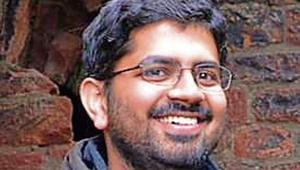
Updated on May 07, 2019 12:43 PM IST
Mumbai | Snehal Fernandes
Maharashtra’s Wild West: Wolves, hyenas, leopards share space with humans
A high probability of all three species existing together was estimated in over 22,896 sq km or 25% of the study site that supports human densities ranging from 59.32 to 1,169.26 persons per square kilometre.

Published on Apr 16, 2019 08:10 AM IST
Hindustan Times, Mumbai | Snehal Fernandes
Lok Sabha Elections 2019: Scientists urge people to vote against inequality, discrimination
Scientists supporting the appeal said the country’s youth should see science as a means of democratic empowerment through sceptical, open-minded questioning, and politics that divides, creates fears, and marginalises should not be endorsed.

Updated on Apr 04, 2019 12:27 PM IST
Hindustan Times, Mumbai | Snehal Fernandes
Mineral contents of Buldhana’s Lonar lake similar to moon rocks: IIT-Bombay study
A meteorite crash occurs when a meteoroid rock – it is formed when asteroids break or collide – survives its travel through the Earth’s atmosphere and lands on the Earth’s surface.
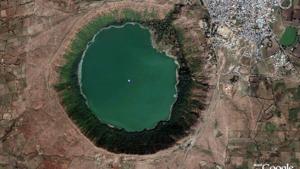
Updated on Mar 25, 2019 06:45 AM IST
Hindustan Times, Mumbai | Snehal Fernandes
Move IST ahead by 30 minutes, save 3.5 billion units of energy: Scientists
At present, India is five-and-half hours ahead of the Greenwich Mean Time (GMT), and among few nations with a fractional shift — in minutes — from GMT. Most countries add or subtract hours from GMT to create their standard time zones.

Published on Mar 20, 2019 04:08 AM IST
Mumbai | Snehal Fernandes
Found: New frog in old hot spot
A thumbnail-sized star-speckled frog species with several features resembling frogs found in South America and Central Africa discovered in the Western Ghats in Wayanad, Kerala, is a unique addition to a series of frog species unearthed in the biodiversity hot spot.

Published on Mar 13, 2019 05:01 AM IST
Hindustan Times, New Delhi/Mumbai | Anonna Dutt and Snehal Fernandes
Pollution destroys 21% wheat, 6% rice crop every year: IIT-M study
The economic loss caused by the plant-damaging pollutant to the country is estimated to be about USD 5 billion for wheat and USD 1.5 billion for rice
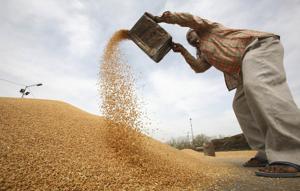
Updated on Mar 11, 2019 05:45 PM IST
Hindustan Times | Snehal Fernandes, Mumbai
Cash crisis at atomic energy dept hits salaries at TIFR
The Department of Atomic Energy, confronting a cash crisis, had to seek a loan from its affiliate Tata Memorial Centre (TMC) in Mumbai to pay the February 2019 salaries of employees, scientists and post-doctoral fellows of 11 affiliated scientific institutes, including the prestigious TIFR.
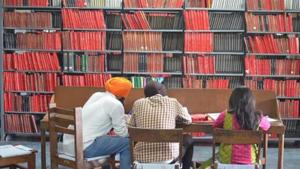
Published on Mar 08, 2019 12:51 AM IST
Hindustan Times, Mumbai | Snehal Fernandes
Worst droughts, famines in India due to lack of moisture, says study
Previous attempts to study 18th and 19th century droughts have been limited to meteorological droughts caused by failure of rains.
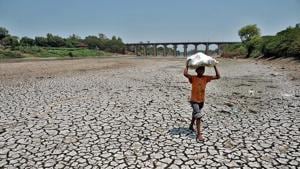
Updated on Feb 16, 2019 11:15 PM IST
Hindustan Times | Snehal Fernandes
In a first, a massage oil with your daily dose of vitamins
Technology that can systematically deliver multiple and individual nutrients such as vitamin D, folate or B12, and iron into the bloodstream via the skin through tiny liposome

Updated on Feb 04, 2019 08:05 AM IST
Hindustan Times | Snehal Fernandes, Mumbai
Lead, cadmium used to give colour to coffee mugs could be leaking into you as well
Researchers from Assam University, Silchar, have found a high concentration of lead and cadmium in double distilled water that leached from both old and new glazed, colourful ceramic cups heated in the microwave (convection mode) at 140 degree Celsius for 2.5 minutes.

Updated on Jan 07, 2019 11:00 PM IST
Hindustan Times | Snehal Fernandes, Mumbai
Sun’s behavior to change from 2020. This is how it will help space missions
According to scientists, predicting the solar cycle is important because the sun’s activity influences environmental conditions in the space. This adversely affects satellites and space-based technologies such as telecommunications and navigational networks.

Updated on Dec 07, 2018 09:21 AM IST
Hindustan Times, Mumbai | Snehal Fernandes
Life after a Metro: Less traffic, but more CO2
IIT-B STUDY: Most shifted from buses; CO2 up as Metro consumes more power
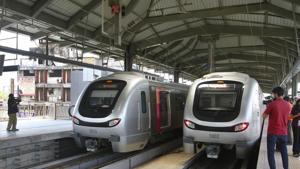
Published on Nov 22, 2018 03:27 PM IST
Hindustan Times, Mumbai | Snehal Fernandes, Mumbai
Isro-Nasa project finds black hole that spins near max possible rate
The findings are significant, said researchers, because so far, high spin rates of only about five black holes have been quantified accurately
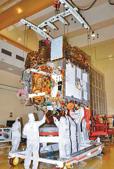
Published on Oct 28, 2018 06:20 PM IST
Hindustan Times | Snehal Fernandes, Mumbai
Portraying ancient knowledge system as an alternative to science could lead to disaster, says Einstein prize awardee
Indian-born theoretical physicist Abhay Vasant Ashtekar was awarded for “numerous and seminal contributions” to the field of gravitational physics.
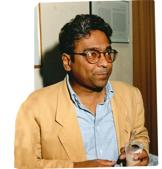
Updated on Oct 25, 2018 06:39 PM IST
Hindustan Times | Snehal Fernandes, Mumbai
Indian researchers develop skin gel that will protect farmers from pesticides
A team from the Institute for Stem Cell Biology and Regenerative Medicine (inStem) have formulated/created and patented the gel

Updated on Oct 19, 2018 09:34 AM IST
Hindustan Times | Snehal Fernandes, Mumbai
Another IST? Study says different time zone for north-eastern states will improve productivity
The study suggests setting clocks in Assam, Meghalaya, Nagaland, Arunachal Pradesh, Manipur, Mizoram, Tripura and the Andaman and Nicobar Islands to run one hour ahead of clocks in the rest of India.
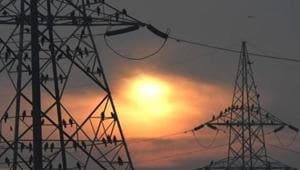
Updated on Oct 10, 2018 03:29 PM IST
Hindustan Times, Mumbai | Snehal Fernandes and Anonna Dutt
Cyclone-30 becomes operational; cancer diagnosis to improve
A new study in the Lancet Global Health released last week found that 8.3% of the total number of deaths in India in 2016 was because of cancer

Updated on Sep 19, 2018 11:18 AM IST
Hindustan Times, Mumbai | Snehal Fernandes, Mumbai
Indian astro satellite captures X-ray image of debris from 446-year-old supernova explosion
For the first time, country’s dedicated multi-wavelength astronomy satellite, Astrosat, has captured an X-ray image of the debris of a supernova. Called SN 1572, the supernova is located 10,000 light years away

Updated on Sep 17, 2018 10:33 AM IST
Hindustan Times, Mumbai | Snehal Fernandes
Sea water microplastic in popular salt brands, reveals IIT-B study
Researchers said the study has not named individuals brands because microplastic was found as a result of background sea pollution, and not during the process of extraction or manufacturing salt.

Updated on Sep 03, 2018 07:01 AM IST
Hindustan Times, Mumbai | Snehal Fernandes
3,027 trees won’t be axed as MMRDA drops road-widening project in Thane
In March 2013, MMRDA had proposed to cut 3,027 full-grown, fruit bearing trees to convert the two-lane road into a four-lane carriageway connecting national highways to Nashik, Pune and Gujarat.

Published on Aug 25, 2018 10:47 AM IST
Hindustan Times | Snehal Fernandes, Mumbai
Noise from Metro work along Colaba-Bandra-SEEPZ touches new high
A report by the Council of Scientific and Industrial Research (CSIR) and National Environmental Engineering and Research Institute (NEERI) has found that digging, blasting and heavy vehicular movements are pushing noise levels beyond permissible limits at all times of day.

Published on Aug 23, 2018 05:58 AM IST
Hindustan Times, Mumbai | Snehal Fernandes
Don’t get sarcasm? This bot trained by IIT-B researchers could help you
Researchers at the Indian Institute of Technology-Bombay have used different machine learning techniques (artificial intelligence) to detect sarcasm in texts on various social media platforms such as Twitter, Facebook and blogs.

Updated on Aug 22, 2018 07:38 AM IST
Hindustan Times, Mumbai | Snehal Fernandes
60% districts in India cannot stand drought, says study
The IIT study prepared a high resolution ecosystem resilience map of India from 2000 to 2014 and found that only 241 of the 634 districts, or 38%, were resilient to droughts.

Updated on Aug 15, 2018 08:36 AM IST
New Delhi, Hindustan Times | Snehal Fernandes






